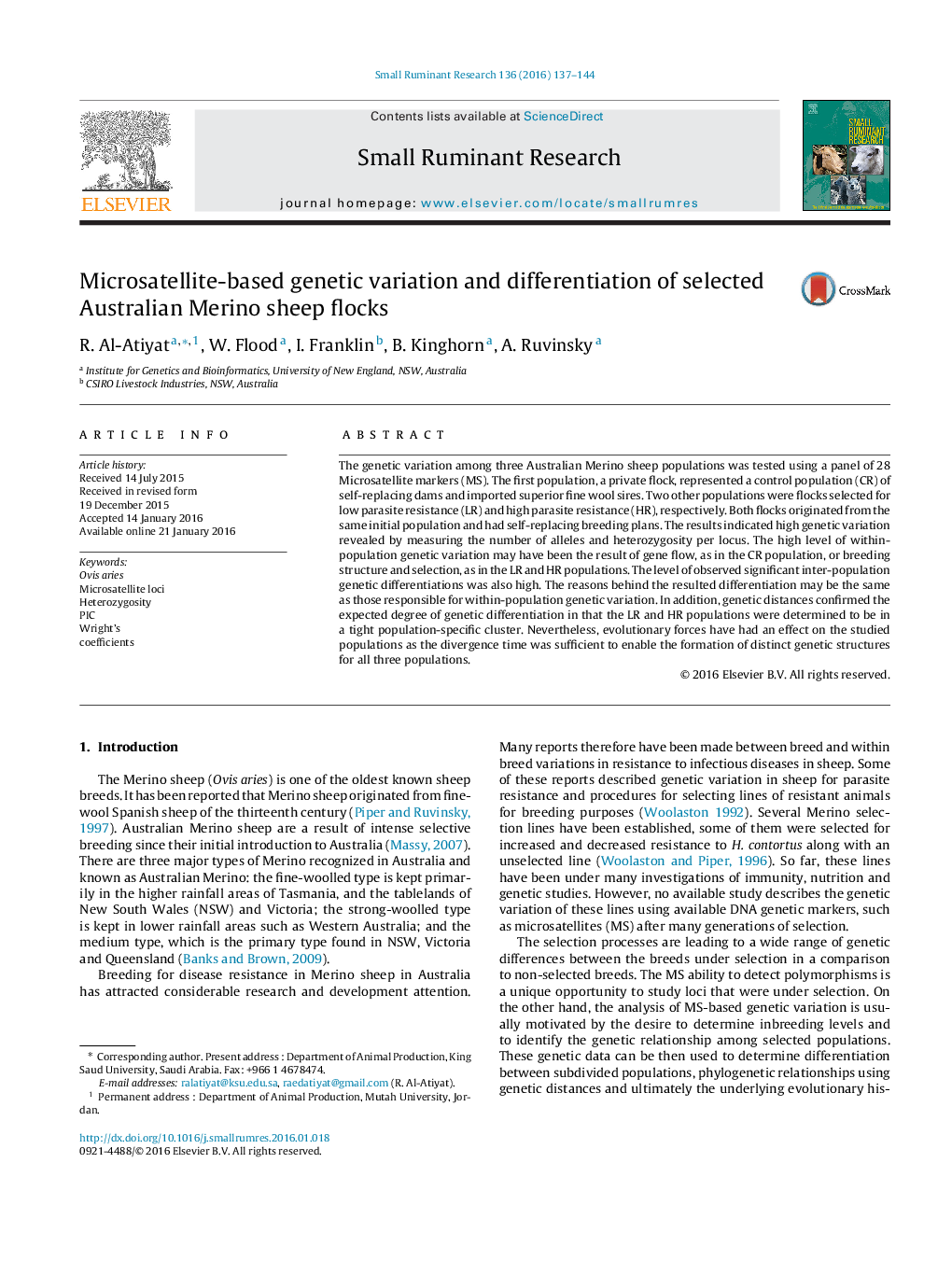| Article ID | Journal | Published Year | Pages | File Type |
|---|---|---|---|---|
| 2456680 | Small Ruminant Research | 2016 | 8 Pages |
•Investigation on the genetic diversity of three Merion sheep flocks selected for super fine wool and parasite resistance.•The selection pressure was effective but high genetic variation observed.•Even though few number of Super fine wool rams used in each flock, the inbreeding was minimum.•Genetic structure showed that these flock have same origin and level of genetic diversity even though they were under different selection pressure.•Good selection and breeding management was the reason to maintain genetic diversity and minimize breeding.
The genetic variation among three Australian Merino sheep populations was tested using a panel of 28 Microsatellite markers (MS). The first population, a private flock, represented a control population (CR) of self-replacing dams and imported superior fine wool sires. Two other populations were flocks selected for low parasite resistance (LR) and high parasite resistance (HR), respectively. Both flocks originated from the same initial population and had self-replacing breeding plans. The results indicated high genetic variation revealed by measuring the number of alleles and heterozygosity per locus. The high level of within-population genetic variation may have been the result of gene flow, as in the CR population, or breeding structure and selection, as in the LR and HR populations. The level of observed significant inter-population genetic differentiations was also high. The reasons behind the resulted differentiation may be the same as those responsible for within-population genetic variation. In addition, genetic distances confirmed the expected degree of genetic differentiation in that the LR and HR populations were determined to be in a tight population-specific cluster. Nevertheless, evolutionary forces have had an effect on the studied populations as the divergence time was sufficient to enable the formation of distinct genetic structures for all three populations.
